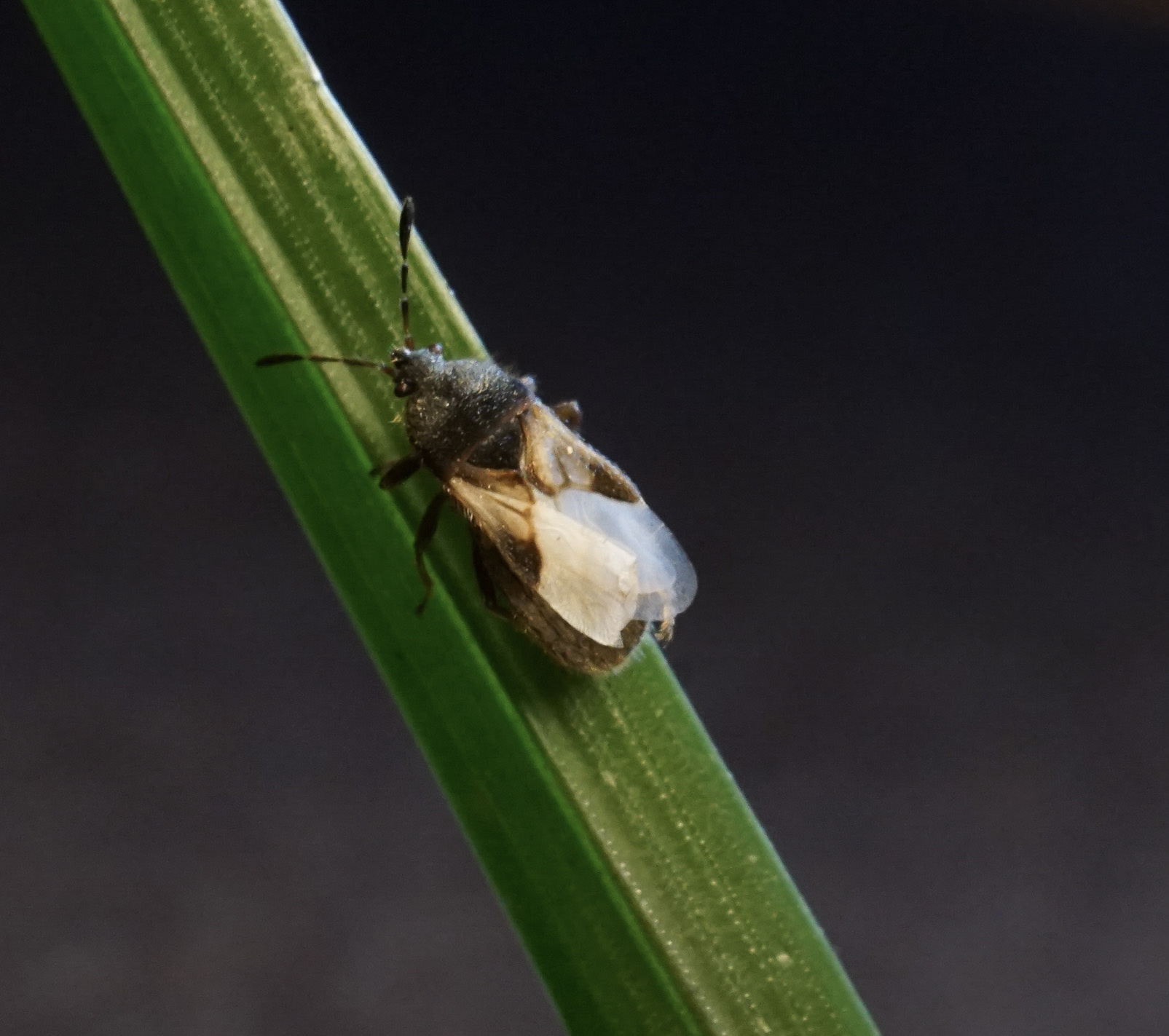Chinch bugs in Southeast Lawns
- Identification
- SCB nymphs are bright reddish orange, about 1/32” long, with a white band across the abdomen
- SCB are tiny insects, about 1/6” long and about 1/32” wide, with adults appearing grayish black and with or without wings
- All stages of SCB damage turf by piercing and sucking plant parts
- Flotation is the best way to detect chinch bugs: cut both ends off of a coffee can or similar container, push the edge of the can into the soil past the thatch, and then flood the can to the brim and refill as needed
- Damage
- Early damage appears as patchy areas of yellowing grass that rapidly browns and dies if the pest is left uncontrolled
- Symptoms resemble drought stress, and if areas are misdiagnosed, damage expands rapidly as chinch bugs move from dying grass to healthier areas
- Life cycle
- Adults overwinter in northern Florida and egg-laying begins in late spring
- A new generation (egg to egg) requires about 13 weeks at 70oF and only 5 weeks at 83oF
- Largest surge of newly hatched nymphs is generally in early spring when a new generation can be completed in five weeks
- Populations can grow quickly with peak nymph emergence from late June through October and peak turf damage coinciding with these populations, especially with stress from hot dry weather
- SCB can have seven or more generations in south Florida
- Only three to four generations of SCB are common farther north in Florida and along the Gulf Coast
- Cultural control
- Maintaining a healthy turf is critical for mitigating damage
- Limit thatch – SCB damage is more common in lawns with heavy thatch
- Fertilize and irrigate judiciously – over-fertilization and/or over-irrigation creates a lush lawn prone to SCB as well as thatch buildup
- Insecticidal control
- Barricor® (deltamethrin), IRAC Group 3A – Solid particle formulation, Type II pyrethroid
- Tetrino® (tetraniliprole), IRAC Group 28 –diamide insecticide introduced in 2021 that controls several lawn pests, including chinch bugs, grubs, billbugs and sod webworms
- Merit (imidacloprid), IRAC Group 4A insecticide – A cornerstone of current southern chinch bug programs
- Alone, Merit provides chinch bug suppression but when combined with Barricor, Merit provide longer residual and reduced pyrethroid use
- Season-long programs – In areas such as Florida and the gulf coast states, where multiple SCB generations occur, insecticides are applied consecutively from spring through early fall:
| Quality | Round 1 Apr/May |
Round 2 June/July |
Round 3 Aug/Sept |
| Better |
(0.25 fl oz/1,000 ft2) + (0.46 fl oz/1,000 ft2) |
(0.25 fl oz/1,000 ft2) + (0.73 fl oz/1,000 ft2) |
(0.5 fl oz/1,000 ft2) |
| Best |
(0.25 fl oz/1,000 ft2) + (0.46 fl oz/1,000 ft2) |
(0.25 fl oz/1,000 ft2) + (0.73 fl oz/1,000 ft2) |
(0.25 fl oz/1,000 ft2) + (0.73 fl oz/1,000 ft2) |
- More information – be sure to follow all label instructions. Contact your Envu Area Sales Manager with questions
| Solution sheet - Chinch bugs |
Adult southern chinch bugs (Envu)

